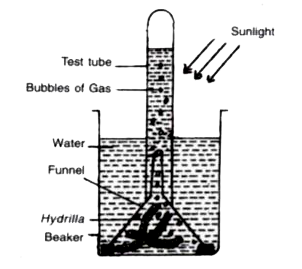Which way would the pH shift when AlCl3 is added to pure water? Write a net ionic equation to support your answer.
To determine how the pH shifts when AlCl3 is added to pure water, we can follow these steps:
Step 1: Understand the Dissociation of AlCl3
When AlCl3 is added to water, it dissociates into aluminum ions Al3+ and chloride ions Cl−:
AlCl3(s)→Al3+(aq)+3Cl−(aq)
Step 2: Hydrolysis of Al3+
The aluminum ion Al3+ is a small, highly charged cation, which can hydrolyze in water to form H+ ions:
Al3+(aq)+3H2O(l)→Al(OH)3(s)+3H+(aq)
This reaction shows that the addition of AlCl3 increases the concentration of H+ ions in the solution.
Step 3: Effect on pH
The pH of pure water is 7, which is neutral. When H+ ions are produced, the concentration of H+ increases, leading to a decrease in pH. Since pH is defined as:
pH=−log(H+)
an increase in (H+) results in a lower pH value.
Step 4: Conclusion
Thus, when AlCl3 is added to pure water, the pH shifts to a value less than 7, indicating an acidic solution.
Net Ionic Equation
The net ionic equation that supports this conclusion is:
Al3+(aq)+3H2O(l)→Al(OH)3(s)+3H+(aq)
Final Answer
The pH shifts to less than 7 when AlCl3 is added to pure water.
---
When AlCl3 is added to water, it dissociates into aluminum ions Al3+ and chloride ions Cl−:
AlCl3(s)→Al3+(aq)+3Cl−(aq)
The aluminum ion Al3+ is a small, highly charged cation, which can hydrolyze in water to form H+ ions:
Al3+(aq)+3H2O(l)→Al(OH)3(s)+3H+(aq)
This reaction shows that the addition of AlCl3 increases the concentration of H+ ions in the solution.
The pH of pure water is 7, which is neutral. When H+ ions are produced, the concentration of H+ increases, leading to a decrease in pH. Since pH is defined as:
pH=−log(H+)
an increase in (H+) results in a lower pH value.
Thus, when AlCl3 is added to pure water, the pH shifts to a value less than 7, indicating an acidic solution.
The net ionic equation that supports this conclusion is:
Al3+(aq)+3H2O(l)→Al(OH)3(s)+3H+(aq)
The pH shifts to less than 7 when AlCl3 is added to pure water.
Similar Questions
Which way would the pH shift when CuSO4, is added to pure water? Write a net ionic equation to support your answer.
View SolutionIdentify the acid and base which form sodium hydrogen carbonate. Write chemical equation in support of your answer. State whether this compound is acidic, basic or neutral. Also write its pH value.
View SolutionHow does K2[PtCl4] gets ionized when dissolved in water? Will it form precipitate when AgNO3 solution is added to it? Give a reason for your answer.
View SolutionName the form of energy which a body may possess even when it is not in motion. Give an example to support your answer.
View SolutionWrite balanced equation when NH3 is dissolved in water.
View SolutionWhat happens when
(i) chlorobenzene is treated with Cl2/FeCl3
(ii) ethyl chloride is treated with AgNO2,
(iii) 2-bromopentane is treated with alcoholic KOH ?
Write the chemical equations in support of your answer.
View SolutionThe figure below represents an experiment set-up to study a physiological process in plants

What would happen to the rate of bubbling of the as it a pinch of sodium bicarbonato is added to the water in the beaker ? Explain your answer
View SolutionThe following diagram demonstrates a physiological process taking place in green plants. The whole set up was placed in bright sunlight for several hours. Study the diagram and answer the questions that follow:

What would happen to the rate of bubbling of the gan if a pinch of sodiam bicarbonate is added to the water in the beaker? Explain your answer
View SolutionSodium reacts with oxygen to produce sodium oxide, which dissolves in water to form sodium hydroxide. On adding hydrochloric acid to the base solution, salt and water are produced. Write balanced chemical equations to represent all the reactions stated in the question.
View SolutionGiven the cell Ag AgCl(s)|NaCl(0.05M)||AgNO3(0.30)|Ag
(a) write half reaction occurring at the anode. (b). Write half reaction occurring at the cathode.
(c). Write the net ionic equation of te reaction. (d). Calculate E0cell at 25∘C
(e). Does the cell reaction go spontaneous as written? (given E∘AgCl,Cl=+0.22volt),E0Ag+/Ag=+0.80volt)
View Solution
